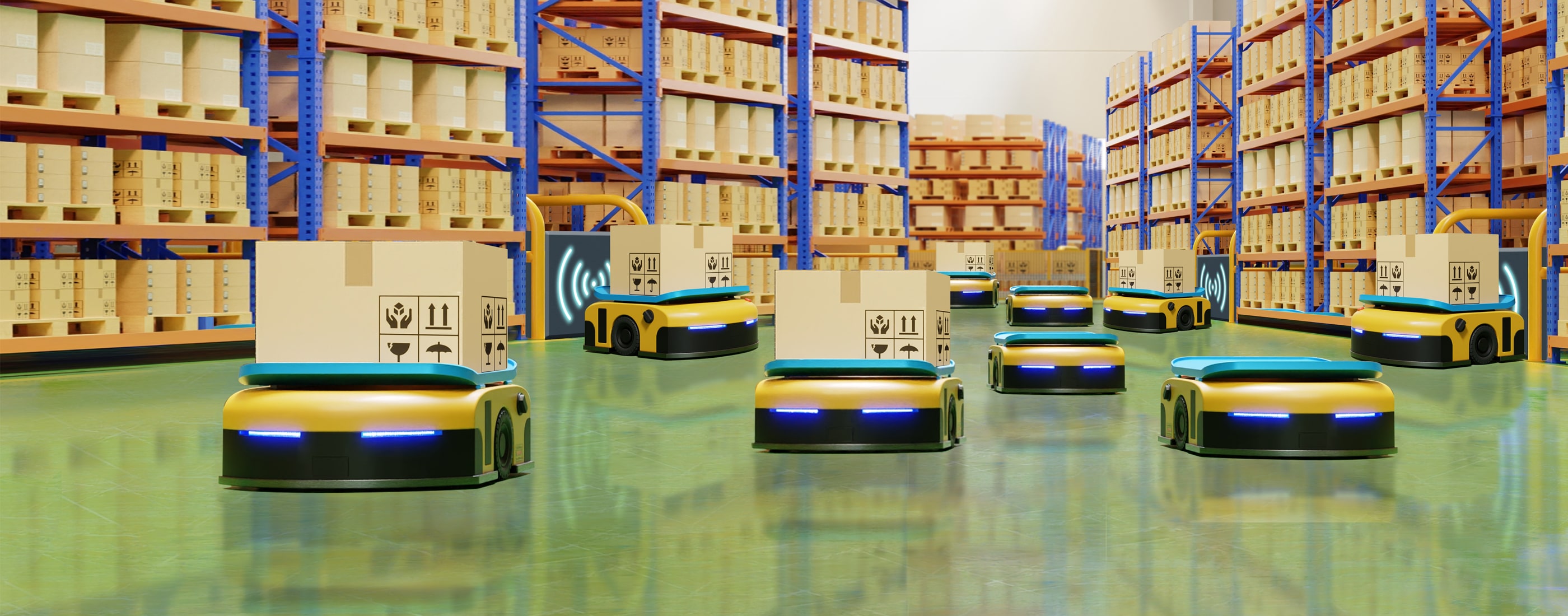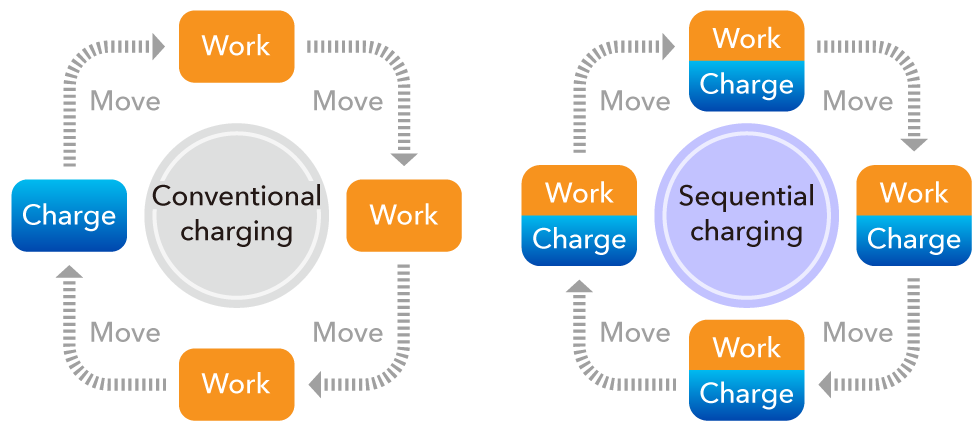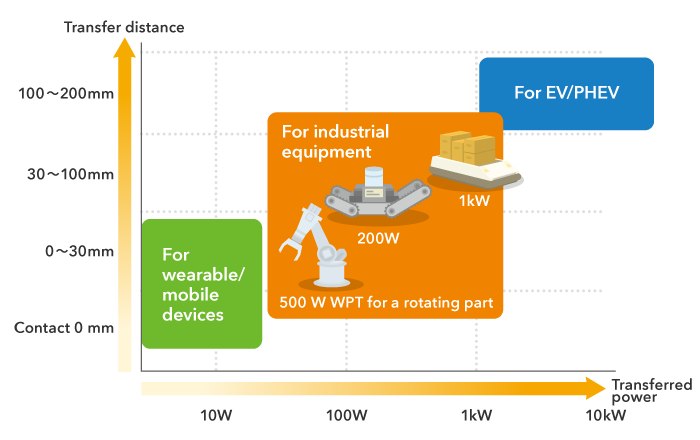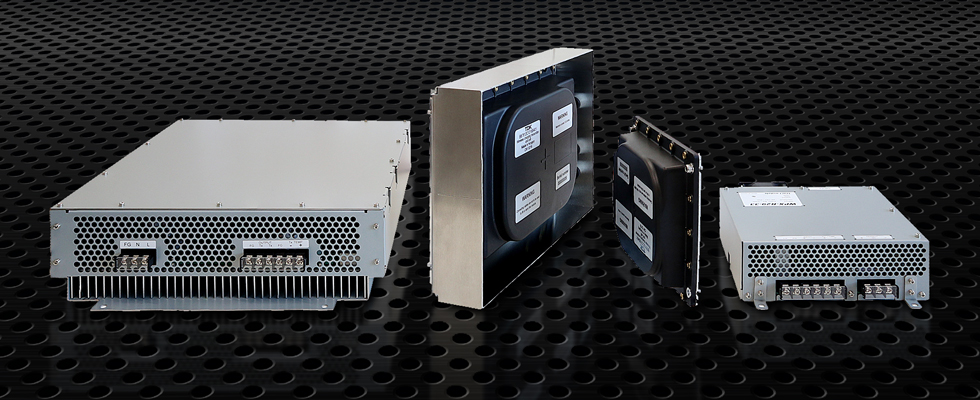Capable Robots Are the Backbone of 24/7 Logistics Centers
Technological Challenges at Distribution Centers and Factories That Need to Be Solved for Further Use of AGVs
At e-commerce websites, you can order goods 24 hours a day. Retailers, who use huge distribution centers, today are facing the challenge of an increasing burden on workers, as they are required to work quickly. In the coming years the amount of goods handled at these distribution centers is expected to further increase. To address this, automation/manpower saving through the use of robotics is increasingly being introduced at distribution centers around the world. This trend is particularly noticeable in Japan, where labor shortages are severe and the government has announced that the country aims to achieve fully unmanned operations in the field of physical distribution by 2030.
World market size for business/service robots
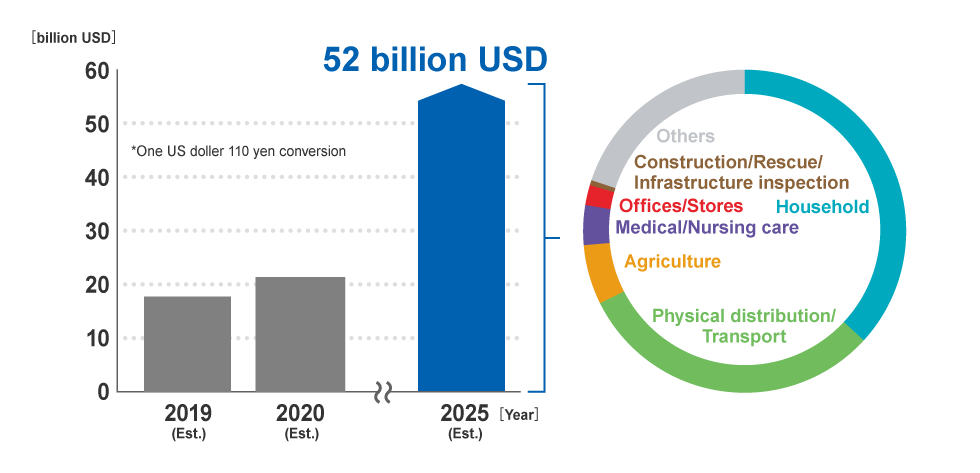
Created based on “Reality and Future Outlook of Worldwide Robot Related Market 2018” by Fuji Keizai Co., Ltd.
Against this backdrop, AGVs are increasingly used, such as for moving items at physical distribution bases and at factory production lines. AGVs, motor cars that can automatically travel along set routes without the necessity of human operation, are attracting attention as indispensable elements of a smarter usage and organization of physical distribution centers and factories in the future. In recent years, even models that automatically travel, while avoiding obstacles using sensors and software have been released; they are defined as robots.
However, various challenges remain before the use of AGVs spreads widely. One of them is charging. A higher number of AGVs in a physical distribution base or a factory requires more traveling routes, which makes operation control more complicated. Under such a situation, charging work involves manual battery replacement, which increases the possibility of human error. Moreover, a contact-type manual battery charge through a cable may cause sparks and even lead to serious accidents, depending on the site. To solve this problem, the introduction of wireless power transfer is increasing.
Sequential Charging Solution Improves the Operating Efficiency of AGVs
The introduction of wireless power transfer has the advantage of enabling sequential charging , in addition to eliminating the necessity for battery replacement work and being free from spark generation. Sequential charging means charging batteries, while work is being performed and thereby contributing to extending the AGV battery life and increasing the total working hours. TDK has developed a 1 kW wireless power transfer system for AGVs by adopting the magnetic resonance method,*1 which achieved ±30 mm of permissible coil displacement range in the AGV travel direction and 20 to 40 mm of distance between coils transferring power, thus expanding the power transfer range. It can respond to coil displacement, if any, and is optimal for sequential charging.
It can be used outdoors as well as in factories under severe conditions because the coil unit features a dustproof and dripproof design conforming to IP65*2 for both the power transmission and power reception sides. Furthermore, the direct charging of batteries is possible through the constant voltage/constant current (CVCC)*3 control, and voltage/current can be freely set through the communication control, allowing it to be used under various environments, which is another advantage.
Besides wireless power transfer for AGVs that employs the magnetic resonance method, TDK has developed the electromagnetic induction method*4 used for wearable and mobile devices as well as the magnetic resonance method for EVs (electric vehicles)/PHEVs (plug-in hybrid electric vehicles), thus providing a wide range of wireless power transfer products. The backbone of this extensive product lineup is ferrite technology,*5 which is the origin of the establishment of TDK. The transmission efficiency of wireless power transfer is greatly affected by the properties of ferrite, a core material of power transmission/reception coils. TDK meets a variety of wireless power transfer needs by making full use of magnetic technologies including its core technology ferrite.
The WPX1000 wireless power transfer system for AGVs is marketed by TDK-Lambda under AirTLansTM.
Terminology
- Magnetic resonance method: Transmits power through resonance circuits formed on both the power transmission and receiving sides while tuning both sides to resonate at the same resonance frequency.
- IP65: A grade of waterproofing/dustproofing performance defined by the Japanese Industrial Standards (JIS).
- CVCC (constant voltage/constant current) control: Control that allows automatic operation of either the constant voltage (CV) mode or the constant current (CC) mode depending on the loaded condition within a range of preset voltage values/current values.
- Electromagnetic induction method: A contactless power transfer system that uses a power-receiving coil unit to capture the magnetic field generated by the power transmission coil.
- Ferrite: A ceramic material with magnetic properties, produced by sintering metallic oxide powders. TDK was established in 1935 with the goal of commercializing ferrite.
